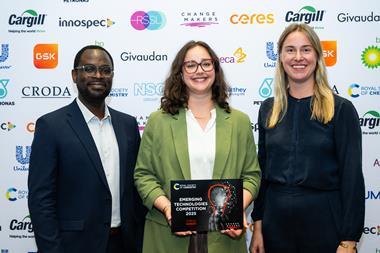‘India is a land of food and farming’, a friend of mine remarked recently. Yet despite being a very fertile country and one of the largest food producers globally, India faces a paradox: millions of people in the country remain undernourished while vast quantities of food are wasted.
Food waste management in India presents a critical challenge, as the country grapples with significant food losses throughout the supply chain. The current state of food waste management in India faces a number of challenges that require innovative solutions to create a more sustainable and efficient system.
The current state
India generates approximately 50 million tons of food waste annually. Much of this waste ends up in landfills, exacerbating greenhouse gas emissions, with decomposing food waste contributing to methane emissions. Methane is 25 times more potent than CO2 in terms of global warming.
This problem of food waste is found at each stage of the supply chain. Agricultural waste typically creates high-fibre residues like husks and stalks that are difficult to manage. Then once food has been harvested, inadequate storage and poor handling can lead to spoilage, and the lack of adequate cold chain infrastructure leads to further waste during transportation. Overproduction and packaging issues mean that food is wasted as it is processed or stored in shops. And finally, consumer habits of buying too much and poor storage lead to food waste in homes.
The challenges
Part of the problem is therefore an inefficient supply chain – spoilage occurs because a fragmented system of transportation, packaging, and processing lead to significant spoilage. Investment in efficient transportation systems and localised food processing units is essential to reduce post-harvest losses. The Swachh Bharat initiative has pushed for better waste management, but more is needed at the city level for collection and segregation.
India also lacks a cohesive national policy for food waste management. Traditional waste management methods receive subsidies, while innovative technologies like black soldier fly larvae (BSFL) treatment and biochar often do not. This misalignment creates financial barriers for new technologies and makes it difficult for innovative startups to compete for municipal contracts.
There are also significant financial barriers that prevent improvements being made to waste management. Securing funding for waste management infrastructure is challenging, with public funding limited and private investors hesitant due to perceived risks and long payback periods. Subsidies drive adoption of new technologies. So policies should incentivise businesses to adopt innovative and superior waste management practices, and provide subsidies for efficient, low-capital methods alongside traditional approaches.
The solutions
The ideal solution to solve a city wide problem or at the bulk waste generator level needs to have the following properties:
- Easy to deploy - Low capital needed
- Quickly scalable - to reduce lead times
- Quick waste processing - to reduce land usage
- No waste products and easy by-product handling - to maintain circularity
- No odor, clean and hygienic - to maintain good working conditions for ground staff
- Low electricity usage - to keep CO2 e mitigation high
Food waste treatment solutions vary widely in terms of their environmental impact, efficiency, and scalability. Below is an analysis of 13 traditional and new food waste treatment solutions, ranked by their climate and ESG impact, efficiency, and scalability.
| Technology | Pros | Cons |
|---|---|---|
| Anaerobic Digestion (Biogas) | Produces renewable energy; significantly reduces greenhouse gas emissions | High initial investment; requires careful feedstock management; may produce odors if not managed properly |
| Black Soldier Fly Larvae (BSFL) Treatment | Quickest waste processing; reduces greenhouse gas emissions; produces valuable by-products | Specific environmental conditions needed for optimal operation |
| Biochar Production | Enhances soil fertility; reduces greenhouse gas emissions | Limited scalability due to feedstock availability; high energy input required for pyrolysis |
| Composting (Aerated Windrow Pile) | Low operational costs; scalable | Slow process (30+ days); moderate emissions; requires large land areas; poorly managed sites may need landfilling |
| In-Vessel Composting / Tumbler | Faster than traditional composting; reduces odor and pest issues | High infrastructure cost; limited capacity |
| Hot (Anaerobic) Digestion | Efficient waste breakdown; reduces pathogens | Requires sophisticated infrastructure; high operational costs |
| Vermicomposting | Environmentally friendly; produces high-quality compost | Slow process (30+ days); requires careful management |
| Effective Microorganisms (EMO) | Enhances waste breakdown; improves compost quality | Requires ongoing management; limited scalability due to continuous inoculation |
| Biofuels Production | Reduces reliance on fossil fuels; lowers emissions | Less efficient; high costs |
| Sewage Sludge Co-Digestion | Efficient use of existing infrastructure; reduces sludge disposal impact | Limited scalability; potential odor issues |
| Traditional Ground Pit Composting | Cost-effective; easy to implement | Slow process (30+ days); low efficiency |
| Food Waste to Energy via Incineration | Reduces waste volume; scalable | Produces emissions; loss of nutrients |
| Landfill with Gas Capture | Scalable; captures some methane emissions | Produces methane emissions; contributes to environmental degradation; low efficiency |
In summary, anaerobic digestion, black soldier fly larvae treatment and biochar production are the top-ranked solutions based on their high climate and ESG impact, efficiency, and scalability. Traditional methods like composting and vermicomposting, while beneficial, are ranked lower due to their slower processing times and lower scalability. Solutions like incineration and landfilling, though scalable, rank lowest due to their limited positive impact (and sometimes negative impact) on sustainability goals.
Job creation potential
Implementing advanced waste management systems can create jobs in waste collection, processing, logistics, and technology maintenance. These initiatives can drive economic growth, particularly in rural areas, contributing to community development.
The path forward
Addressing food waste management in India requires a multi-faceted approach that focuses on industrial and systemic solutions. The development of robust infrastructure, coupled with policy reforms and the adoption of innovative technologies, will be crucial in overcoming the challenges. Additionally, leveraging technologies like BSFL and biochar can transform waste into valuable resources, reduce greenhouse gas emissions, and contribute to a circular economy.
The challenge of food waste management in India is immense, but it also presents an opportunity to drive significant environmental, economic, and social benefits. By addressing the current gaps in infrastructure, policy, and innovation, India can significantly reduce food waste, mitigate environmental impact, create jobs, and improve food security. The time to act is now, and with the right strategies in place, India can lead the way in sustainable food waste management, setting an example for the world to follow.

Chemistry will support India’s sustainability ambitions

Chemistry is central to addressing challenges across a range of sectors
- 1
- 2
- 3
- 4
- 5
- 6
- 7
- 8
- 9
- 10
 Currently
reading
Currently
reading
Transforming food waste management in India
- 12




































No comments yet